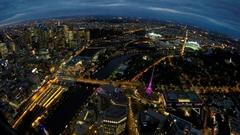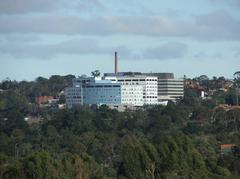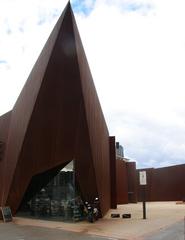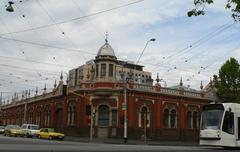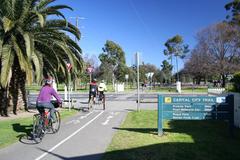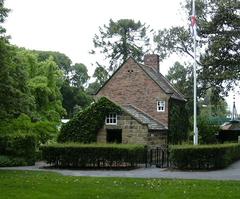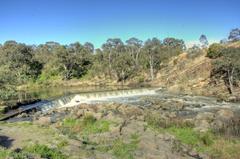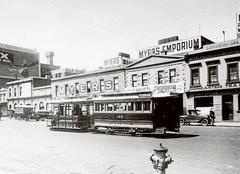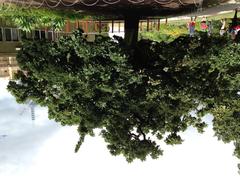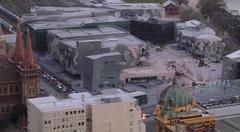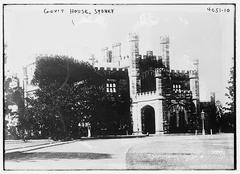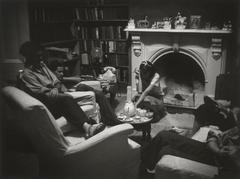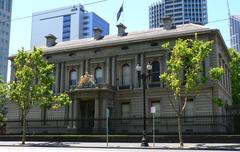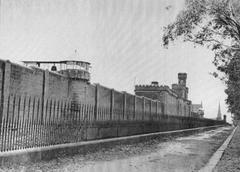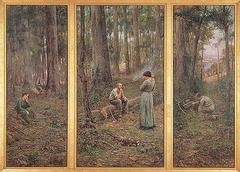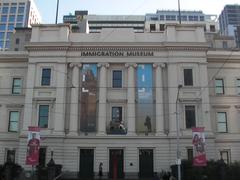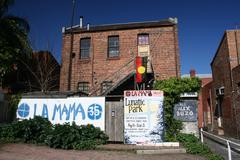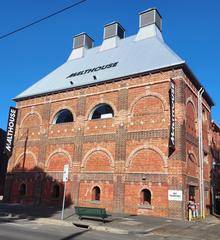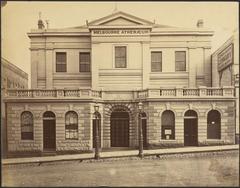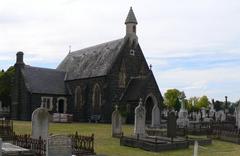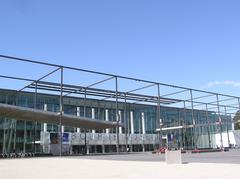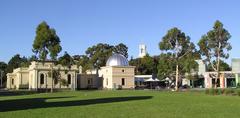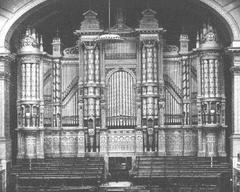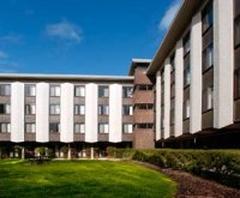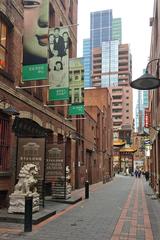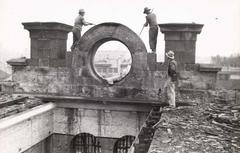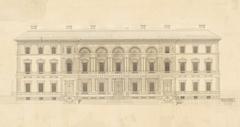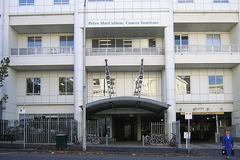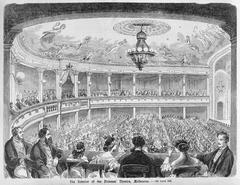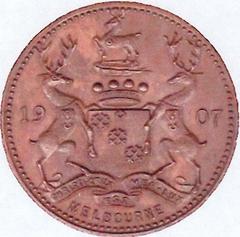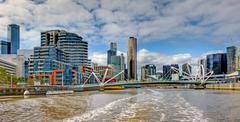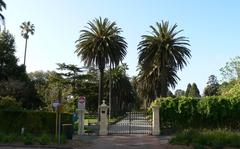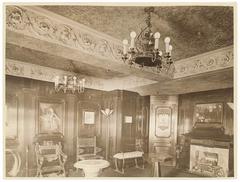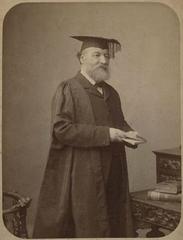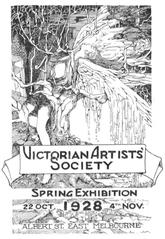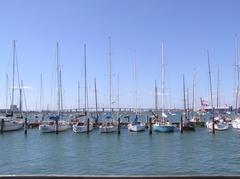Bridge Over Djerriwarrh Creek: Visiting Hours, Tickets, and Melbourne Historical Sites Guide
Date: 14/06/2025
Introduction
Nestled near Melton on Melbourne’s western outskirts, the Bridge Over Djerriwarrh Creek stands as a striking testament to Victoria’s rich colonial heritage and engineering prowess. Built between 1858 and 1859, this single-span sandstone arch bridge facilitated safe passage over Djerriwarrh Creek during the Victorian gold rush, symbolizing the region’s rapid development and enduring community spirit. Today, the bridge remains an accessible historical landmark, offering visitors a chance to engage with its layered narratives—from Indigenous heritage to colonial infrastructure and ongoing conservation efforts (Victorian Heritage Database).
Contents Overview
- Early History and Context
- Architectural Design and Construction
- Historical Significance
- Conservation and Architectural Legacy
- Indigenous Heritage and Cultural Context
- Practical Visitor Information
- Community Advocacy and Conservation Initiatives
- Visitor Experience and Nearby Attractions
- Frequently Asked Questions (FAQ)
- Conclusion and Next Steps
- Sources
Early History and Context
The Djerriwarrh Creek region has been significant to the Wurundjeri Woi-wurrung and Bunurong Boon Wurrung peoples of the Kulin Nation for countless generations (City of Melbourne: Aboriginal Melbourne). During the gold rush of the 1850s, European settlers sought reliable transport routes between Melbourne and Ballarat, prompting the construction of the bridge in 1859 (Heritage Council Victoria). The permanent stone structure replaced a hazardous creek crossing, enabling safer movement of people, goods, and livestock.
Architectural Design and Construction
Design Features
The bridge, designed by colonial engineer John C. Climie, is a single-span bluestone arch measuring approximately 27 meters—one of Victoria’s largest at the time (Engineering Heritage Australia). Built with locally quarried bluestone, it features expertly fitted voussoirs, robust abutments, and parapets. Its rusticated stonework is both aesthetically pleasing and structurally enduring.
Construction Techniques
Traditional masonry techniques were employed, with timber centering supporting the arch during construction. The single-span design minimized flood risks by excluding in-stream piers—a forward-thinking approach for its era (Victorian Heritage Database).
Historical Significance
Role in Regional Development
The bridge played a pivotal role in opening Melbourne’s western corridor. It facilitated the gold rush, supported agricultural trade, and influenced future Victorian bridge designs by showcasing the advantages of stone construction (Melton City Council Heritage).
Heritage Recognition
Officially listed on the Victorian Heritage Register (Place Number H144) and the Register of the National Estate, the bridge is celebrated for its historical and engineering importance (Victorian Heritage Database).
Conservation and Architectural Legacy
Current Physical Condition
A significant restoration in 1963 ensured the bridge’s structural integrity. Today, it remains in “good condition” with regular inspections by the Department of Transport and Planning (Victorian Heritage Database). However, surrounding neglect—such as illegal dumping and overgrown vegetation—has impacted the site’s aesthetics (Melton Moorabool Star Weekly).
Architectural Influence and Preservation
The bridge’s design influenced subsequent stone arch bridges in Victoria and is a prominent feature in heritage tours and engineering studies (Engineering Heritage Australia). Ongoing conservation focuses on traditional masonry techniques and community collaboration.
Indigenous Heritage and Cultural Context
Wurundjeri and Bunurong Country
Djerriwarrh Creek and its landscape are integral to the Wurundjeri and Bunurong peoples, woven into songlines, stories, and custodial obligations (City of Melbourne: Aboriginal Melbourne; Melbourne Water: History and Heritage). European colonization and the gold rush brought profound disruption, including land dispossession and environmental change. Current reconciliation initiatives encourage visitors to learn about and acknowledge the site’s Indigenous significance (ABC News: Traditional Owners).
Community and Social Value
The bridge serves as a symbol of both colonial progress and enduring Indigenous connections. Community groups have recently rallied for its restoration and protection, highlighting its ongoing social value (Star Weekly: Djerriwarrh Creek Bridge Campaign).
Practical Visitor Information
Visiting Hours and Entry
- Hours: Open year-round; recommended visits during daylight for safety. No official opening or closing times.
- Entry Fee: Free—no tickets or permits required.
Access and Transport
- Location: Old Western Highway, near Melton West and Long Forest, 45 km west of Melbourne.
- Getting There: Car access via the Western Freeway and Brooklyn Road. Informal parking is available.
Accessibility
- The area is accessible by foot and bicycle, though surfaces are uneven. Wheelchair access is limited. Those with mobility concerns should plan accordingly.
Facilities
- No toilets, picnic tables, or interpretive signage are currently provided. Proposals for future enhancements are under consideration.
Safety
- Exercise caution due to uneven terrain and possible debris from illegal dumping.
- Inform others if hiking in the area, as the site is secluded.
Events and Tours
- Occasional guided tours and community events are organized by local groups. Check local council or community group websites for updates.
Community Advocacy and Conservation Initiatives
Grassroots Action
Local residents have formed advocacy groups, such as the Djerriwarrh Creek Bridge Community Group, to protect the bridge and its environment. They coordinate clean-ups, lobby government bodies, and maintain an active presence on social media (Melton Moorabool Star Weekly).
Conservation Challenges
Maintenance is complicated by the site’s ambiguous jurisdiction among responsible agencies. Illegal dumping and neglect remain concerns, but ongoing community action and proposals for beautification are promising steps forward.
How Visitors Can Help
- Participate in or support local clean-up events.
- Report illegal dumping to the EPA at 1300 372 842.
- Respect the site and take rubbish home.
- Engage with community groups via local social media channels or Facebook (URL illustrative).
Visitor Experience and Nearby Attractions
On-Site Experience
- The Bridge: A visually striking sandstone arch, perfect for history and photography enthusiasts.
- Nature: Native vegetation and birdlife surround the bridge, with walking opportunities along the creek.
Walking and Exploration
- Enjoy short strolls or longer hikes in nearby reserves. The 16 km Djerriwarrh Creek Circuit Hike offers scenic views (note: this hike does not cross the historic bridge) (Trail Hiking Australia).
Nearby Destinations
- Bacchus Marsh: Historic town with orchards, cafes, and heritage streets (Australia.com).
- Lerderderg State Park: Gorges, forest trails, and panoramic lookouts (Trail Hiking Australia).
- Long Forest Nature Conservation Reserve: Unique mallee habitat and birdlife (Hiking Fiasco).
- Werribee Gorge State Park: Popular for hiking, climbing, and river views.
- Ballarat: Gold rush city with museums and historic sites (Australia.com).
Frequently Asked Questions (FAQ)
Q: What are the visiting hours?
A: The bridge is open year-round, 24/7 as an outdoor heritage site. Daylight visits are recommended for safety.
Q: Is there an entry fee or tickets required?
A: No, entry is free.
Q: Are there any facilities on site?
A: There are currently no public toilets, picnic areas, or interpretive signs.
Q: Is the bridge accessible for people with disabilities?
A: Accessibility is limited due to uneven and overgrown terrain.
Q: Are guided tours available?
A: Tours are occasionally offered during special events; check with local groups or council websites for updates.
Q: How can I help preserve the site?
A: Respect the environment, join local clean-up events, and report dumping to the EPA.
Q: What other attractions are nearby?
A: Bacchus Marsh, Lerderderg State Park, Long Forest Reserve, and Ballarat are all within easy reach.
Conclusion and Next Steps
The Bridge Over Djerriwarrh Creek is more than a relic of colonial engineering; it is a living site of cultural convergence, community pride, and natural beauty. Its enduring stone arch not only connects Melbourne to its pioneering past but also reflects the ongoing stewardship of local residents and Traditional Owners. By visiting with respect, supporting grassroots initiatives, and exploring the broader region, every visitor contributes to the bridge’s legacy.
For up-to-date information, heritage news, and upcoming events, download the Audiala app and follow local social media channels. Join the effort to keep this historic landmark vibrant for future generations.
Sources
- Visiting the Historic Bridge Over Djerriwarrh Creek: Hours, Tours, and Heritage Insights, 2024, Heritage Council Victoria (Victorian Heritage Database)
- The Djerriwarrh Bridge: History, Cultural Significance & Visiting Information in Melton, 2024, City of Melbourne (City of Melbourne: Aboriginal Melbourne)
- Bridge Over Djerriwarrh Creek: Visitor Guide, History, Conservation, and Community Advocacy, 2024, Melton Moorabool Star Weekly (Melton Moorabool Star Weekly)
- Visitor Experience and Nearby Attractions, 2024, Trail Hiking Australia (Trail Hiking Australia)
- Engineering Heritage Australia: Bridge Over Djerriwarrh Creek, 2024 (Engineering Heritage Australia)
- Melton City Council Heritage: Djerriwarrh Creek Historic Bridge, 2024 (Melton City Council Heritage)
- Star Weekly: Djerriwarrh Creek Bridge Campaign Builds, 2024 (Star Weekly: Djerriwarrh Creek Bridge Campaign)


